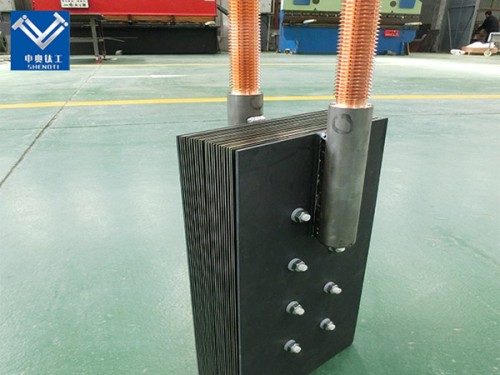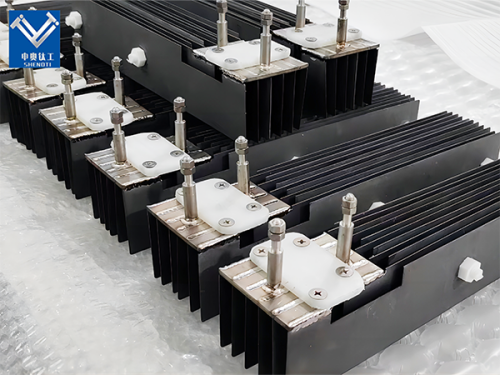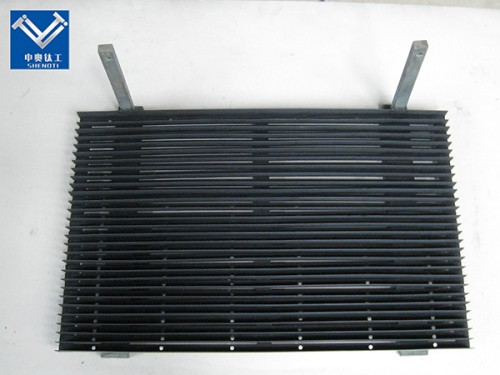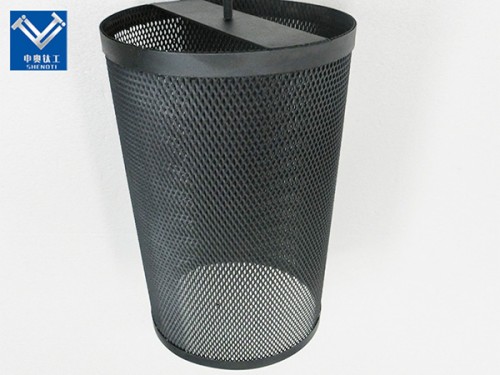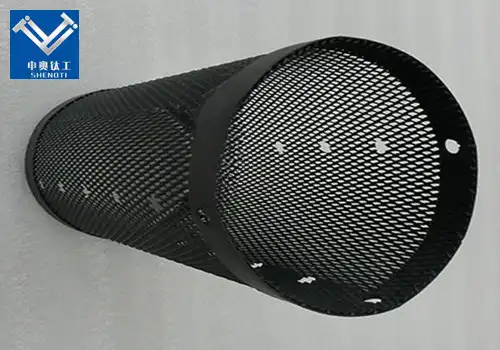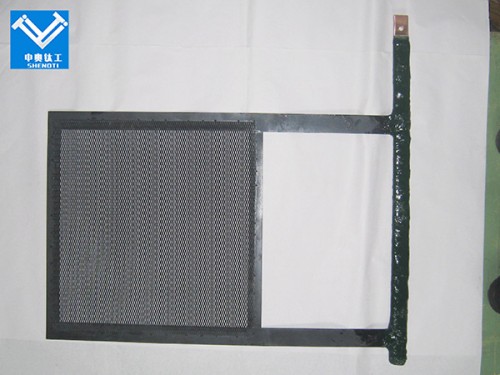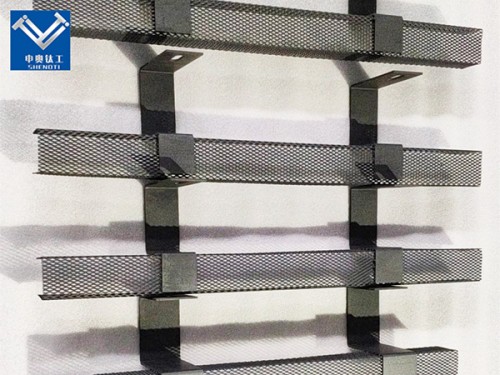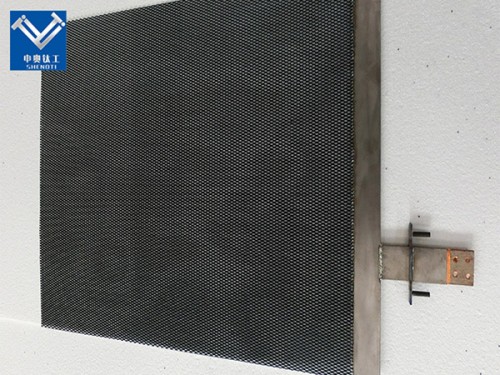
Why Are Ruthenium-Coated Titanium Electrodes Ideal for Chlorine and Wastewater Treatment?
2025-06-09 17:02:06
Why Are Ruthenium-Coated Titanium Electrodes Ideal for Chlorine and Wastewater Treatment?
Electrochemical technologies play a central role in modern chlorine production and wastewater treatment. ruthenium-coated titanium electrodes, often in mixed oxide form (RuO₂/IrO₂ on Ti).
What makes ruthenium coatings more effective than graphite or lead anodes?
Compared to conventional graphite or lead-based electrodes, ruthenium-coated titanium anodes shine in several critical aspects:
Corrosion resistance and durability
Titanium's passive oxide layer provides a stable base, while ruthenium oxide (RuO₂) actively catalyzes oxidation reactions. Together, they dramatically prolong service life. For instance, titanium–ruthenium anodes in chlor‑alkali production can survive 5–7 years, compared to only 8 months for graphite equivalents
Lower electrical overpotential and energy savings
RuO₂ offers high electrocatalytic activity, reducing the extra voltage (overpotential) required for chlorine evolution. Users report 10–20% lower DC power consumption
Stable electrode geometry and consistent cell operation
These electrodes resist dimensional deformation, ensuring consistent inter-electrode distance and stable cell voltage
Graphite and lead types deform, impairing efficiency and necessitating frequent replacement.
Preventing contamination and boosting product purity
Unlike dissolving materials from graphite or lead, ruthenium‑coated titanium stays intact, avoiding contamination of chlorine and alkali products
This results in higher-grade chlorine and caustic soda—critical for sensitive industries.
How do ruthenium-coated titanium electrodes improve chlorine generation efficiency?
Electrochemical chlorine generation relies on the chlorine evolution reaction (CER):
Cl⁻ → ½Cl₂ + e⁻
Ruthenium-supported electrodes excel in two ways:
Enhanced catalytic activity for CER
RuO₂ dramatically lowers the activation barrier, enabling high current densities at lower voltages. Mixed oxide (Ru/Ir/TiO₂) anodes are often termed Dimensionally Stable Anodes (DSA), ideal for high-performance chlorine evolution
Resistance to oxidation and passivation
A stable Ru/Ir oxide layer resists oxidative wear and impurity fouling. Titanium magma beneath remains intact unless layer adhesion fails
, preserving long-term reactivity.
In brine electrolysis and chlorine‑alkali cells, the result is higher current efficiency, reduced energy consumption, and consistent chlorine quality .
Why are these electrodes particularly suited for wastewater disinfection and decontamination?
Wastewater treatment increasingly leverages electrochemical oxidation and electrochlorination to degrade organic pollutants and disinfect pathogens. Ruthenium-coated titanium electrodes are a top choice because:
High oxidation capacity enables organic removal
In wastewater with COD ~300, chlorine evolution electrodes halve COD in about 2 minutes
. These oxidation powers are similar to Ru/Ir electrodes used in advanced electrocoagulation and oxidation systems .
In situ generation of disinfectants like hypochlorite
Facilities can produce sodium hypochlorite on-site via Ru‑coated Ti electrodes, avoiding logistics and handling of hazardous chemicals .
Robust performance in aggressive water chemistries
Ruthenium-coated titanium resists chloride-rich and acidic environments typical of industrial and municipal waste streams. Titanium is preferred over stainless steel in strong-oxidizer or extreme pH wastewater
Durability reduces replacement and waste
These electrodes can last over 40,000 hours—or years—before needing replacement, cutting maintenance frequency and environmental impact
What combination of coating materials offers optimal performance—pure RuO₂, Ru/Ir blends, or other MMO mixtures?
What operational challenges and maintenance issues arise with these electrodes?
Although robust, Ru‑coated Ti electrodes can face:
Coating delamination, especially if adhesion is faulty
RuO₂ dissolution over time, raising overpotential
Surface oxide saturation—can reduce catalytic activity
Microcracking from mechanical or thermal stress, allowing Ti oxide passivation
How does performance compare to platinum-coated titanium or pure platinum electrodes?
While platinum offers top-tier catalytic activity, it has drawbacks:
Ultra-high cost → Pt is often economically impractical for large-scale use .
Pt/Ti electrodes can be faked, leading to poor performance unless sourced from reputable vendors
MMO range (Ru/Ir/Ti) balances cost (~⅓ of Pt) and performance for chlorine evolution
For mid-to-large scale industrial use, ruthenium or Ru/Ir-coated Ti offers the best overall value.
How long will a ruthenium-coated titanium electrode typically last in service?
Lifespans vary:
Chlor-alkali: 5–7 years under diaphragm salt electrolysis
Graphite replacement units: 86,000 to 113,000 hours (~10–13 years) in lab/dev environments
Plating/wastewater treatment: Often ~4,000+ operating hours in electroplating; 30 days unstable pH sensing unaffected
With good design, periodic inspection, and controlling operational stress, multi-year continuous operation is well-proven.
For large-scale chlorine and wastewater treatment, conventional thermal decomposition-based Ru/Ir/Ti MMO coatings dominate due to their:
Proven durability
Manufacturing scalability
Cost-effectiveness
In cumulative performance metrics—energy efficiency, durability, corrosion resistance, operational stability, and cost—ruthenium-coated titanium electrodes (especially in Ru/Ir MMO form) hold a decisive edge in chlorine production and electrochemical wastewater treatment.
Contact Us
Baoji City ShenAo Metal Materials Co., Ltd.
Email: zh@baojiti.com.cn
For inquiries about ruthenium-coated titanium electrodes or customized solutions, please reach out — we’re here to help.
YOU MAY LIKE











